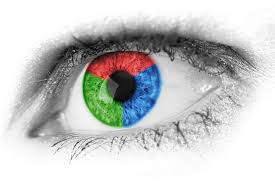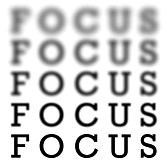What is the Bezold Effect?
The Bezold effect, first described by its namesake Wilhelm von Bezold, occurs when the hue of a color is altered in appearance by the presence of surrounding colors. For example, a yellow box adjacent to a blue one will appear darker than a yellow box adjacent to a red one to the human eye. Additionally, colors may acquire a perceptible tint from surrounding colors; red may appear more violet when bordered by blue. Of course, the colors themselves are not changing. Our perception is being skewed, as with any other optical illusion.

This effect is similar to the simultaneous contrast effect, which illustrates shifts in hue and brightness when two colors are placed alongside one another. The Bezold effect deals more with alteration of the color itself than with what aspects are assimilated from surrounding colors. Color contrast has been linked, by researchers, to brightness perception itself.
However, in the case of the Bezold effect, the exact ocular mechanics behind it have yet to be explained. Some studies associate the phenomenon specifically with our peripheral vision. Others hypothesize that spatial frequency plays a role in whether colors will assimilate or contrast one another.
The Bezold effect is also similar to the McCollough effect. However, in the McCollough scenario, colorless images may appear to have color when viewed in alternation with similarly structured but differently colored patterns. Both effects speak volumes about the way we see color, though the McCollough effect is better understood by the scientific community.
How is the Bezold Effect Useful?
Whatever science lingers behind the Bezold effect, artists of all trades make use of its optical illusions to enhance the aesthetics of their craft. Graphic designers take advantage of this heavily when it comes to typography; bordering text with thin lines of white or black can greatly impact the audience’s perception of those words.
Interior designers make use of the Bezold effect when coordinating color layouts. Culinary industries arrange plates and packaging so as to create the most visually appealing balance of contrast and color assimilation. Even aircraft design incorporates knowledge of the Bezold effect, in order to design pilot controls that are most easily recognizable for the human eye.
Bezold Effect Vision Test
Here is an example image of the Bezold effect, which you can use to test the visual illusion for yourself.
You will notice that the color surrounded by blue appears brighter, more vibrant, while the octagon surrounded by red appears darker. Both inner squares contain the exact same color, but our visual perception of them changes depending on their surroundings. This is a natural occurrence experienced worldwide, and it is indicative of good color perception. Vision tests can illustrate the differences between color assimilation and color contrast, though have little bearing on whether your not you qualify for LASIK vision correction.


